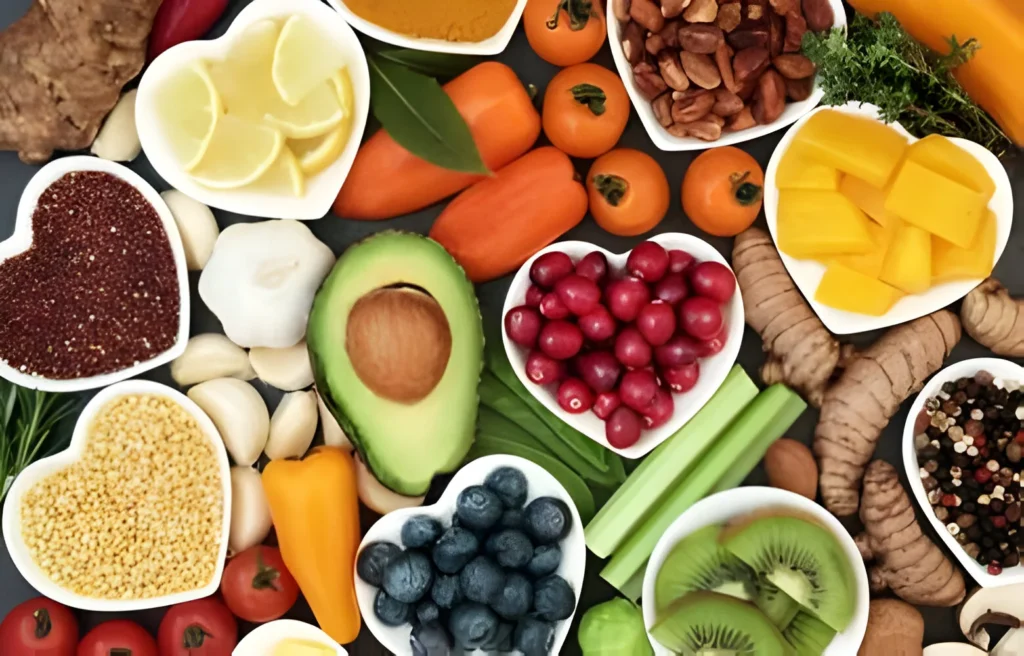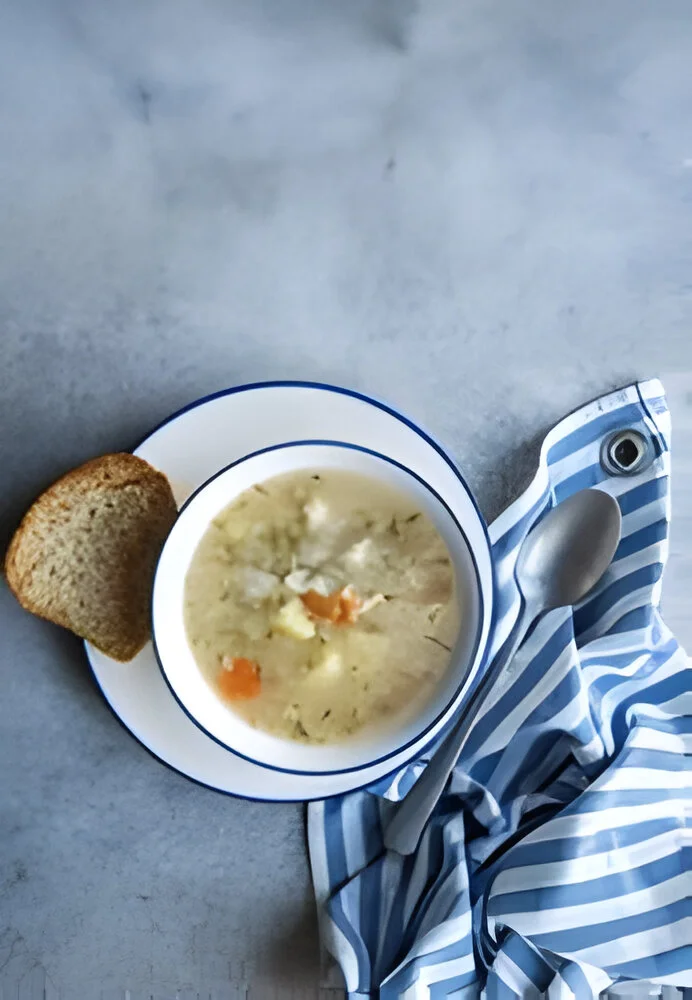Ozempic diet plan confusion got you down? Maybe you’re not seeing the weight loss you hoped for on Ozempic, or those pesky side effects keep sabotaging your good intentions.
You’re not alone. Diet plays a HUGE role in Ozempic success, but figuring out what to eat can be confusing. Restricting yourself isn’t the answer, but the wrong foods can leave you feeling miserable and hinder your progress.
Introducing the Ultimate Ozempic Diet Plan! This comprehensive guide will teach you exactly what to eat, how to manage side effects, and maximize your weight loss potential on Ozempic.
Introduction:

Have you started Ozempic for weight loss or diabetes management? Are you feeling overwhelmed by how to adjust your eating habits?
Don’t worry, you’re not alone! The right Ozempic diet plan can make a huge difference in maximizing your results and feeling your best.
So, what exactly is the secret to eating well on Ozempic? Is there a special formula? The truth is, there’s no one-size-fits-all plan. However, understanding a few key principles will set you up for success.
Let’s dive in! Here’s what you need to know:
- Ozempic changes your relationship with food. It can curb cravings and slow digestion, altering hunger signals.
- Managing side effects matters. Nausea and digestive shifts are common, but diet can help!
- Personalized nutrition is key. Learn how to build a plan around your needs and preferences by understanding carbohydrate counting
Ready to make Ozempic work for you? Let’s explore everything you need to know! Feel free to share your experiences below and tag us on social media!
Understanding Ozempic and How It Impacts Your Diet:

Ever wonder how Ozempic changes your relationship with food? Well, it’s not just about appetite control. Ozempic works on multiple levels to change how your body processes food.
Firstly, it mimics a hormone called GLP-1. Is GLP-1 the secret to feeling full and satisfied? Yes, it plays a major role in appetite and helps signal to your brain when you’ve had enough.
Additionally, Ozempic slows down how quickly food moves through your stomach. Is this why people experience nausea sometimes? This delayed emptying might be the culprit, especially at the beginning of treatment.
So, what does all of this mean for your Ozempic diet plan? Let’s break it down:
- Smaller may be better: More frequent, smaller meals might be easier to digest.
- Protein power: Prioritizing protein helps you feel fuller for longer. Check out this guide to choosing healthy fats from the American Heart Association for some ideas.
- Fiber is your friend: Aim for high-fiber foods to support healthy digestion and manage blood sugar levels. The National Institutes of Diabetes and Digestive and Kidney Diseases website offers great insights on carbohydrate counting.
The Core Principles of an Ozempic Diet:

Ready to make the most of your Ozempic journey? Let’s dive into the building blocks of an Ozempic diet plan that supports your goals.
- Prioritize Protein: Is protein your new best friend? Absolutely! It keeps you feeling full, helps stabilize blood sugar levels, and even helps with preserving muscle mass during weight loss. Think lean options like chicken, fish, eggs, beans, and Greek yogurt.
- Focus on Fiber: Feeling a bit sluggish? Fiber is your secret weapon! It supports healthy digestion, keeps you feeling satisfied, and plays a key role in managing blood sugar. Find it in delicious fruits, veggies, whole grains, and legumes.
- Hydration is Key: Are you sipping enough water? Staying hydrated is absolutely crucial on your Ozempic journey. It helps fight off nausea, promotes overall health, and can even boost energy levels. Aim for sipping throughout the day rather than large gulps at once.
- Mindful Portions: With Ozempic changing your appetite cues, how can you tell if you’re eating enough (or too much)? Start by practicing mindful eating– taking time to savor your food and listen to your body’s signals. You may find smaller, more frequent meals work better for you.
Let me know – what are your favorite protein and fiber-packed snacks? Share below, or tag me on social media!
Important Note: As with any diet change, getting personalized advice from a dietitian or healthcare professional is always recommended.
Check out resources like the National Institutes of Diabetes and Digestive and Kidney Diseases guide to carbohydrate counting to take your meal planning skills to the next level.
Let me know – do these core principles make sense for your Ozempic diet plan?
Best Foods to Eat on Ozempic:

Craving tasty, satisfying meals that also support your Ozempic journey? You’re in the right place! Let’s dive into the most delicious and beneficial foods for your Ozempic diet plan.
Fruits & Vegetables: Your Weight Loss Allies
Think vibrant colors and amazing textures! Low-glycemic index fruits and vegetables are your best friends.
Berries, apples, pears, broccoli, spinach, and carrots pack in fiber, vitamins, and minerals while keeping your blood sugar stable.
Is variety a priority for you? There are tons of amazing options out there!
Lean Proteins: The Satiety Superstars
Protein helps you feel full, builds muscle, and keeps your metabolism humming. Opt for lean choices like:
- Chicken and turkey
- Fish (packed with healthy omega-3 fats)
- Eggs
- Tofu, beans, and lentils (great vegetarian options)
Whole Grains: Outsmart Processed Carbs
Ditch those refined grains and reach for whole grains like brown rice, quinoa, and oats. These provide lasting energy and more fiber for digestion and blood sugar control.
For more grain ideas, check out this article on choosing healthy fats from the American Heart Association.
Healthy Fats: Flavor and Fullness
Is a little richness what you need? Healthy fats like avocados, nuts, seeds, and olive oil add deliciousness and keep you satisfied longer. An added bonus is they’re great for your heart health.
Low-Fat Dairy: Calcium and Protein Power
Plain yogurt (Greek is super protein-rich!), cottage cheese, and milk are excellent additions. They offer bone-building calcium and even more of that hunger-busting protein.
Remember: Talk to your doctor or a dietitian for personalized guidance on portion sizes and how to fit these foods into your overall Ozempic diet plan.
Foods to Minimize or Avoid:

Think of your Ozempic diet plan as a way to support your body while the medication does its job. Do processed snacks and sugary treats really fit into that supporting role? Probably not!
To get the most out of Ozempic, it’s wise to reduce your intake, or even avoid, certain foods. Here’s why:
- High-Fat Foods: Think fried favorites, fatty meats, or full-fat dairy. These can worsen Ozempic’s digestive side effects and slow your food down, potentially leading to uncomfortable bloating.
- Sugary Foods & Drinks: Sweets, sodas, even seemingly “healthy” juices… is the temporary satisfaction worth the potential blood sugar spikes or digestive upset they might bring on? Check out this resource from the American Heart Association on understanding healthy fats vs. those you should minimize: Healthy Fats vs. Unhealthy Fats: [invalid URL removed]
- Ultra-Processed Foods: Limit these as much as possible. They’re often packed with unhelpful ingredients that can tax your system and interfere with Ozempic’s goals.
Remember, this isn’t about total deprivation! It’s about making smart choices that support your weight loss and health journey alongside Ozempic.
Let me know – what’s one food swap you’re eager to try? Tag me on social media to share your progress!
Sample Meal Plans:
Ready to put your Ozempic diet plan into action? Here are a few sample days to get you inspired. Remember, these are just a starting point – feel free to mix and match to find what works best for you!
Day 1
- Breakfast: Scrambled eggs with spinach and whole-wheat toast. Is a side of low-sugar fruit a good option?
- Lunch: Grilled chicken salad with mixed greens, veggies, and a light vinaigrette.
- Snack: Plain Greek yogurt with berries and a sprinkle of nuts.
- Dinner: Baked salmon with roasted vegetables and quinoa.
Day 2
- Breakfast: Overnight oats made with unsweetened almond milk, berries, and chia seeds.
- Lunch: Lentil soup with a whole-grain roll. Take a look at these easy-to-follow healthy soup recipes on the American Heart Association website for inspiration.
- Snack: Apple slices with peanut butter.
- Dinner: Tofu stir-fry with brown rice and vegetables.
Day 3
- Breakfast: Smoothie made with protein powder, greens, almond milk, and a touch of fruit.
- Lunch: Turkey sandwich on whole-wheat bread with lettuce, tomato, and avocado.
- Snack: Hummus with carrot sticks and cucumber slices.
- Dinner: Shrimp scampi (use olive oil) over zucchini noodles. For guidance on managing your carbohydrates, have a look at this resource on the National Institutes of Diabetes and Digestive and Kidney Diseases website.
Important Notes:
- Adjust Portions: These are suggestions; listen to your body’s hunger and fullness cues.
- Snacks are Optional: Snack if you feel you need it for energy and blood sugar stability.
- Drink Water: Stay hydrated throughout the day!
Managing Ozempic Side Effects with Diet:

Nausea got you down? Ozempic diet plan tweaks to the rescue! If those first few doses leave you woozy, don’t despair. Simple dietary changes often work wonders.
- Smaller is Better: Think frequent, mini-meals rather than large ones. Is snacking your new superpower? Smaller bites put less strain on your digestive system and can keep nausea at bay.
- Bland is Beautiful (For Now): Spicy food lover? Hold that thought! While Ozempic adjusts, temporarily opt for blander foods like crackers, toast, or rice. These can calm an upset stomach. Check out this list of National Institutes of Diabetes and Digestive and Kidney Diseases: “Carbohydrate Counting” : [invalid URL removed] for some gentle ideas.
- Watch Out for Constipation: Focus on fiber! Fruits, veggies, whole grains – they’re your gut’s best friend. Aim for at least 25-30 grams a day. Bonus: fiber helps you feel full, aiding your weight loss efforts.
- What About Diarrhea?: Sometimes, it’s the opposite issue. If diarrhea strikes, go easy with fiber-rich foods at first and sip plenty of fluids. A temporary switch to a BRAT diet (bananas, rice, applesauce, toast) might help until things settle.
Remember, everyone reacts differently to Ozempic. If side effects are intense, absolutely chat with your doctor. Tag me on social media and share your wins – I love hearing them!
Let me know if you’d like an even deeper dive into specific foods to target or avoid during side effects. Your feedback helps shape this guide!
Additional Tips for Success on the Ozempic Diet:
Feeling those Ozempic changes? Here’s how to boost your results and make this diet journey smoother:
- Meal timing matters. Is spacing out your meals helping with nausea? Smaller, more frequent snacks might keep your blood sugar stable and energy levels up. Experiment to find what works for you!
- Mindful munching is key. Slow down, savor each bite, and ditch the distractions while eating. This helps you tune into your body’s fullness signals, which might be different while on Ozempic.
- Listen to your gut. Your body is adjusting to Ozempic, so be patient! Notice what foods feel good and what tends to worsen side effects. Adjust your ozempic diet plan accordingly.
- Move that body! Even a brisk walk makes a difference. Exercise complements the Ozempic diet by boosting metabolism and improving insulin sensitivity. Want workout ideas? Check out these gentle exercises perfect for managing diabetes and weight loss.
Let me know how these tips are working for you – drop a comment below or tag me on social media!
Important Note: Always consult your doctor before making significant changes to your diet or exercise routine while on Ozempic
Conclusion:
Think your Ozempic diet plan involves bland food and constant hunger? Think again! Can you enjoy flavorful meals, achieve weight loss, and manage those pesky side effects? The answer is YES!
With a focus on whole foods, smart choices, and mindful eating, you can make the most of your Ozempic journey. Remember, consistency is key – a healthy diet isn’t a sprint, it’s a marathon.
Need help figuring out where those healthy fats come from? The American Heart Association: “Healthy Fats vs. Unhealthy Fats” is a fantastic resource to guide your choices. Struggle with what to eat when blood sugar dips?
- What’s been the biggest surprise on your Ozempic diet plan?
- Any tips to share with fellow Ozempic users?
Let’s keep the conversation going! Share your experiences and tag us on social media.
Don’t miss: Your Ultimate Guide to Food Tracker Success